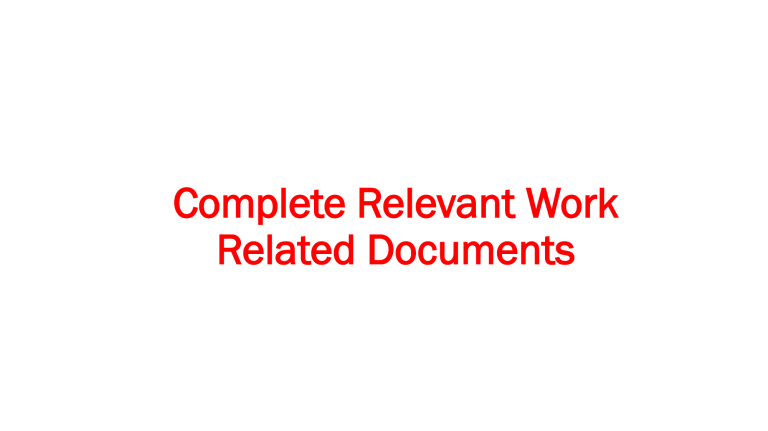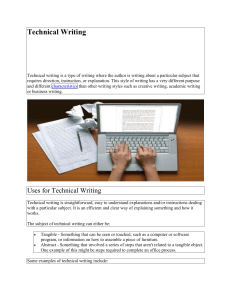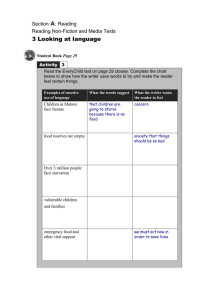
Complete Relevant Work Related Documents Types of Forms • In every workplace you will be required to complete forms. Each workplace will have forms specific to their requirements. You must make sure that you know which forms to fill in, when to use, and where to find the necessary forms. • When filling in a form: • • read the form carefully • • fill in all the required details • • only include necessary information • • write clearly and simply • • check that you have completed it properly • • send or give it to the appropriate person, or file in the appropriate place • Work instructions are the most basic tool used in every business or organisation to help workers follow a sequence of steps. Inadequate work instructions are likely to result in a variety of problems in the workplace that could range from: • • returned products • • loss of materials • • customer complaints • • liability issues • • poor work performance • Work instructions can have a major impact on the effectiveness and productivity of a workplace. If instructions are difficult to follow, workers will make errors in implementing the steps. • A good work instruction is a detailed sequence of steps that workers need to follow each time they perform a task. The purpose of a work instruction is to organize steps in a logical and systematic way so that workers can easily follow it independently. • This means a consistent format for your work instructions is important. Workers can read the information faster and absorb it more quickly if it follows a consistent font and format. It also makes the development of further work instructions far simpler as you have a template to follow. Technical Writing Definition of Technical Writing Technical writing is a type of writing where the author is writing about a particular subject that requires direction, instruction, or explanation. This style of writing has a very different purpose and different characteristics than other writing styles such as creative writing, academic writing or business writing. Uses for Technical Writing Technical writing is straightforward, easy-to-understand explanations and/or instructions dealing with a particular subject. It is an efficient and clear way of explaining something and how it works. The subject of technical writing can either be: •Tangible – Something that can be seen or touched, such as a computer or software program, or information on how to assemble a piece of furniture. •Abstract – Something that involved a series of steps that aren’t related to a tangible object. One example of this might be steps required to complete an office process. Some examples of technical writing include: •Instruction manuals •Policy manuals •Process manuals •User manuals •Reports of analysis •Instructions for assembling a product •A summarization of a long report that highlights and shortens the most important elements Tips for Good Technical Writing • Regardless of the type of document which is written, technical writing requires the writer to follow the properties of knowing their audience, writing in a clear, non-personal style and doing extensive research on the topic. By including these properties, the writer can create clear instructions and explanations for the reader. • Know your audience. An expert in the field will understand certain abbreviations, acronyms, and lingo that directly applies to such a field. The novice will not understand in the same manner and, therefore, every detail must be explained and spelled out for them. • Use an impersonal style. Write from a third person perspective, like a teacher instructing a student. Any opinions should be omitted. • The writing should be straightforward, to the point, and as simple as possible to make sure the reader understands the process or instruction. This at times may appear as simply a list of steps to take to achieve the desired goal or may be a short or lengthy explanation of a concept or abstract idea. • Know how to research. Gather information from a number of sources, understand the information gathered so that it can be analyzed thoroughly, and then put the information into an easy to understand format to instruct those who read it. The more inexperienced your audience, the more information you will need to gather and explain. • Be thorough in description and provide enough detail to make your points; but, you also have to consider that you need to use an economy of words so that you do not bore your reader with gratuitous details. • A good technical writer can make a difficult task easy and can quickly explain a complex piece of information.





